Mesquite trees are short, thorny trees with feathery foliage, white or yellow flowers, and seed pods containing peas. They can be found in shrublands in southern states such as Texas, Arizona, and others. The three most common types of mesquite trees are the honey mesquite, velvet mesquite, and screwbean mesquite.
While mesquite trees are nitrogen fixers that can enhance soil productivity, they can also be problematic for property owners in states such as Texas and California, as their roots can extend up to 200 feet and absorb water, making it difficult for other plants to grow in the vicinity.
They are often referred to as “trash trees” or “devil trees.” To identify different species of mesquite trees, one can examine photos and descriptions of their leaves, flowers, and bark.
Mesquite Tree Facts
Mesquite is a large deciduous shrub or small tree belonging to the genus Prosopis and the pea family Fabaceae. There are approximately seven mesquite species that can be found in Texas, California, and Northern Mexico. These trees have the ability to tolerate drought and low light conditions due to their widespread roots.
They can grow in various habitats such as deserts, grasslands, along streams, and on hillsides. Invasive growth can be observed in certain regions due to their rapid development and extensive root system.
Mesquite trees grow into multi-branched bushes with a height of 3 feet (1 meter) in shallow soil, while in deep soil, they can grow up to 30-50 feet (9-15 meters) tall with a vase or rounded shape. Their spreading canopy can stretch up to 40 feet (12 meters) across. Mesquite trees thrive best in full sun and well-draining soil in USDA zones 7 through 11. The word mesquite originates from the Aztecan term “mizquitl,” and in Mexico, they are referred to as mesquite trees.
Mesquite Tree Leaves
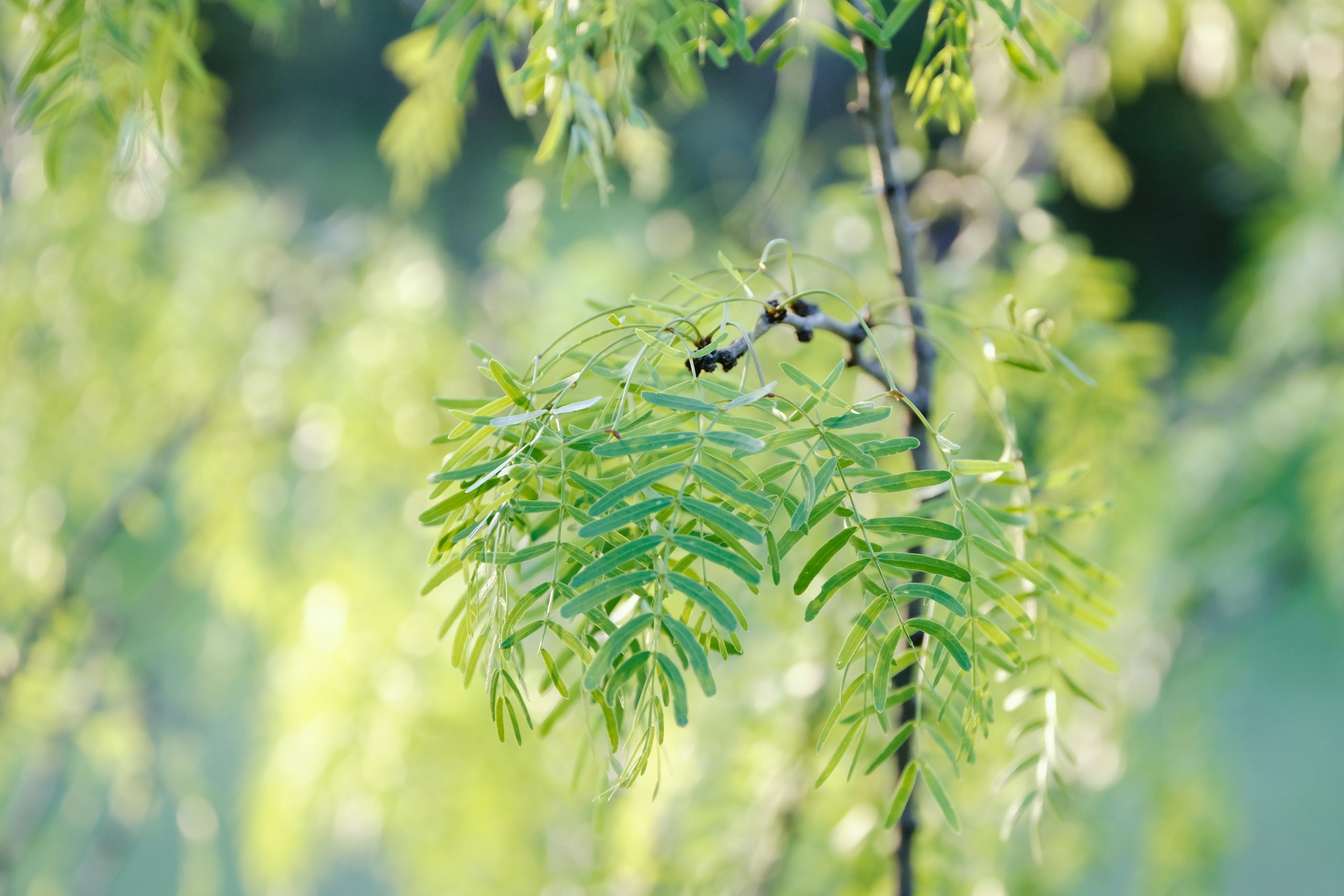
Mesquite trees have complex pinnate leaves with 20 to 50 small oblong leaflets arranged along a stem. These compound pinnate leaves can be green or grayish-green in color and contrast with the trees’ sparse growth. Mesquite leaves can vary in length, ranging from 8 to 10 inches (20 to 25 cm).
The most common mesquite trees found in Texas, such as honey mesquite and velvet mesquite, have bipinnate compound leaves. During colder months, mesquite trees shed their leaves.
Unlike other deciduous trees, mesquite trees retain their green leaves until new leaves emerge in the spring, when the weather is relatively mild. The tree only sheds its older leaves when new feathery leaves develop.
Mesquite Tree Thorns
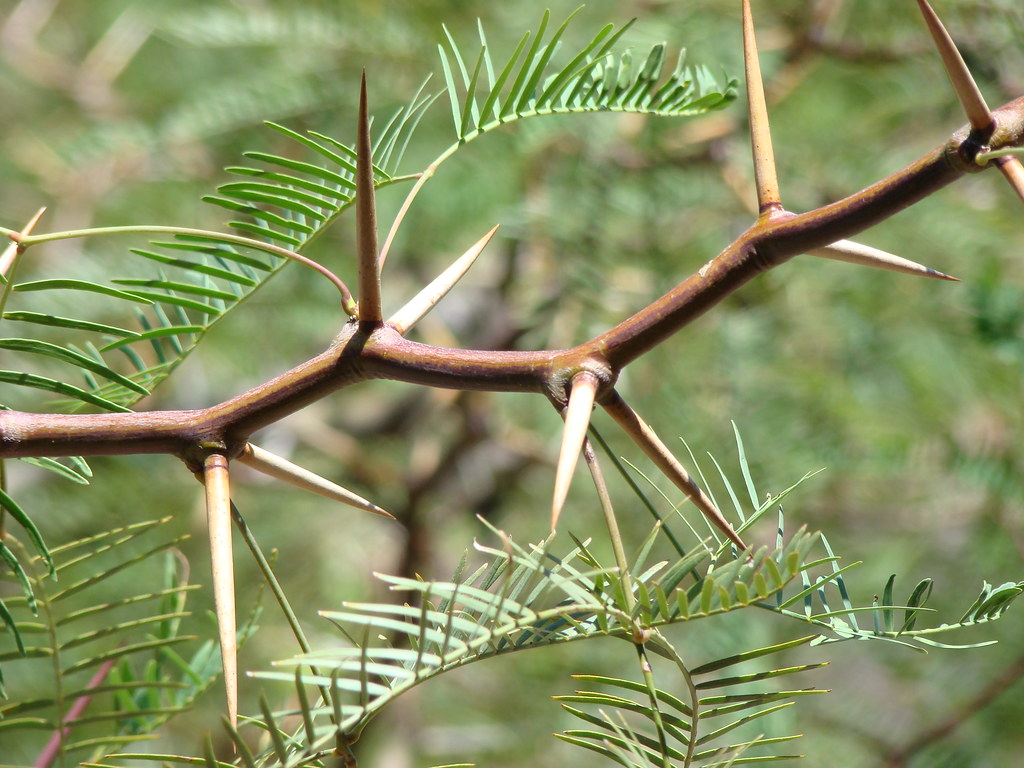
This illustration showcases the thorns of the Prosopis juliflora mesquite tree, which can grow up to 3 inches (7.5 cm) in length. If one comes into contact with these spines, it can cause a great deal of pain. Some individuals may even be allergic to mesquite thorns.
Shrubby mesquite plants are often used as a defensive hedgerow due to their thin, pointed thorns. However, spineless mesquite hybrids are available. If you wish to grow mesquite trees in your yard, you can choose a cultivar that has no spines. Alternatively, you can remove the spines from juvenile trees and allow them to disappear as the tree grows.
Mesquite Tree Bark

The bark of the honey mesquite tree (Prosopis glandulosa) is reddish-brown in color with a rough, scaly texture. The appearance and color of mesquite bark may vary depending on the species, ranging from pale brown to nearly black. Young mesquite trees typically have thin, light-colored bark, but as they mature, the bark becomes flecked and darker. The bark of mesquite trees also has a spiky appearance due to the presence of straight thorns.
Mesquite Flowers

The smooth mesquite (Prosopis laevigata) produces long, cylindrical white or yellow spikes known as catkins. These catkins can grow up to 2-3 inches in length and have a pale color. Mesquite trees typically bloom in the spring and summer, adding decorative value to the landscape with their clusters of pale-yellow blossoming spikes.
Mesquite Seed Pods (Mesquite Fruit)
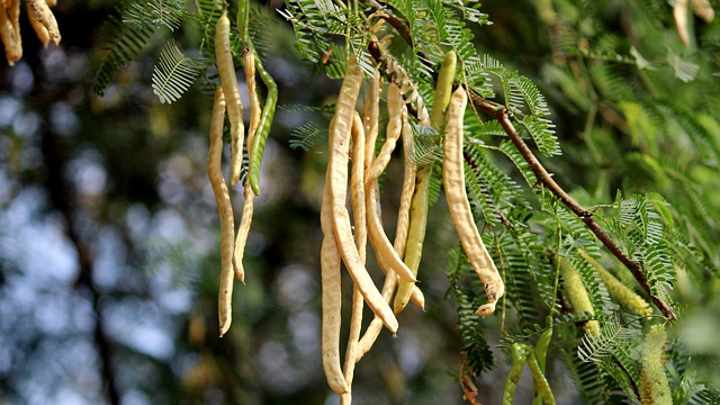
Mesquite trees produce unique seed pods that contain bean-like seeds. These pods can grow up to 10-12 inches (25 to 30 cm) in length and have a yellowish or reddish-brown color when mature. Mesquite seeds, which are ripe and sweet-coated in July and August, are attractive to both humans and animals.
The screwbean mesquite tree produces the most unusual seed pods, which look like tightly coiled springs or screws. In contrast, the seed pods of traditional mesquite trees resemble slender runner bean pods, as seen in pictures of mesquite seed pods from other species.
Mesquite Wood
The wood of the mesquite tree is a dense and hard dark brown hardwood with an intricate grain pattern that adds to its ornamental value. This hardwood is highly sought-after for furniture, flooring, fence posts, and paneling due to its natural beauty and durability. Additionally, mesquite wood is used in smoking food to impart a unique flavor. It also makes excellent firewood.
How to Identify Mesquite Tree
Identifying mesquite trees can be done by examining their feathery and intricate leaves. These thin leaves form clusters that sparsely grow on the branches, giving the tree a resemblance to a mimosa. In addition, mesquite trees have spiky bark and branches, along with multiple stems that create a wide, spreading canopy. These distinct characteristics are helpful in recognizing mesquite trees.
Types of Mesquite Trees
The three most prevalent species of mesquite trees are the honey mesquite, velvet mesquite, and screwbean mesquite. Mesquite trees can be found in various regions of the Southwest United States, Northern Mexico, and South America. Let’s now explore the ways to identify the presence of mesquite trees.
Honey Mesquite Tree (Prosopis glandulosa)
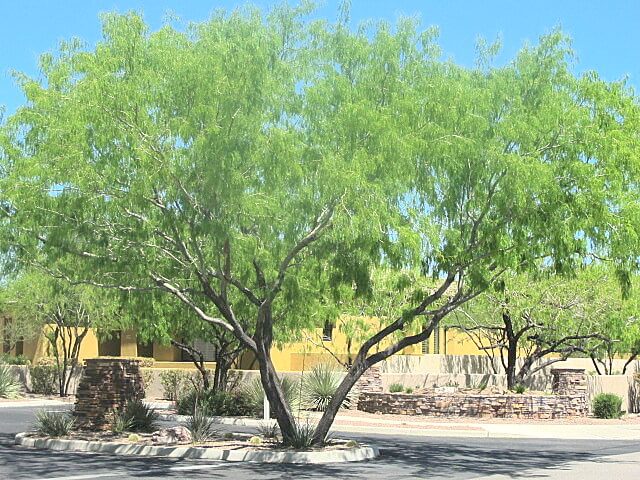
Honey mesquite trees (Prosopis glandulosa) are characterized by their long, drooping branches, feathery leaves, yellow flowers, long tubular seed pods, and spiny branches. These trees have a spreading, rounded crown and shiny foliage that hangs from their branches, giving them a broad appearance. The bark of honey mesquite trees is reddish-brown in color and has a rough, fissured texture.
These trees can grow up to 40 feet (12 meters) in height and breadth, and a bent tree extending to one side is a sign of honey mesquite trees growing in the desert environment. Honey mesquite trees are commonly found in Texas, Southern California, Arizona, and Northern Mexico, and they are often referred to as the “Texas honey mesquite” due to their prevalence in the Lone Star State.
Honey mesquite trees are commonly planted for decorative purposes and provide summer shade. When planting this mesquite species in your yard, it is recommended to select thornless cultivars. Specimen and lawn trees are the ideal choices for honey mesquite trees, as their delicate foliage provides dappled shade in sunny backyards.
To grow honey mesquite trees, plant them in well-drained soil with plenty of sunlight. These trees grow rapidly and are adaptable to different soil types. Water is essential for developing strong trees with a broad crown. Pruning young trees heavily to remove thorns and suckers is advisable for creating a single-trunk mesquite tree with a large, spreading canopy.
Identifying honey mesquite trees
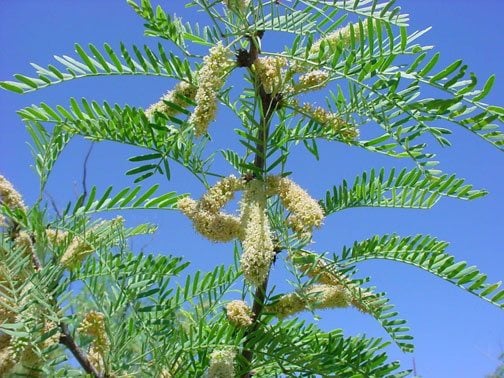
The honey mesquite tree is characterized by its vivid green bipinnate compound feathery leaves, which have thorns and can grow up to 8 inches (20 cm) in length. Each leaf is composed of eight to twenty pairs of oblong leaflets with rounded ends, giving rise to the fern-like foliage that forms the rounded crown of the tree.
Honey mesquite thorns are reddish-tan in color and can grow up to 2 inches (5 cm) long on twigs, branches, and the trunk of the tree.

Honey mesquite trees produce light yellow blooms that hang in spherical clusters from their prickly limbs. These flower spikes are produced in early spring and can last until late summer. The immature seed pods of the tree are pale-yellow in color.
As the seed pods mature, they begin to resemble pea pods and have a yellowish hue. These pods are attached to the branches in a string of beads and contain between ten to twenty seeds.
Velvet Mesquite Tree (Prosopis velutina)

The velvet mesquite tree is characterized by its fern-like gray-green leaves, pendulous spikes of pale yellowish-green flowers, and dark reddish-brown shaggy bark. It grows from small to medium in size, with a spreading vase-shaped crown that can reach a height of 25 feet (7.5 meters).
Velvet mesquite shrubby trees are commonly found in southern Arizona, in arid grasslands or beside streams in damp soil. These mesquite trees often have multiple stems and a wide spread of growth.
Velvet mesquite trees are ideal for sunny yards and require little watering due to their drought tolerance. Pruning young trees is crucial for removing thorns and creating a nice form. Porous, sandy soil is the optimum soil type for velvet mesquite trees. Due to their low water requirements, velvet mesquite trees are popular in Arizona for growing in xeriscape settings.
Identifying velvet mesquite trees
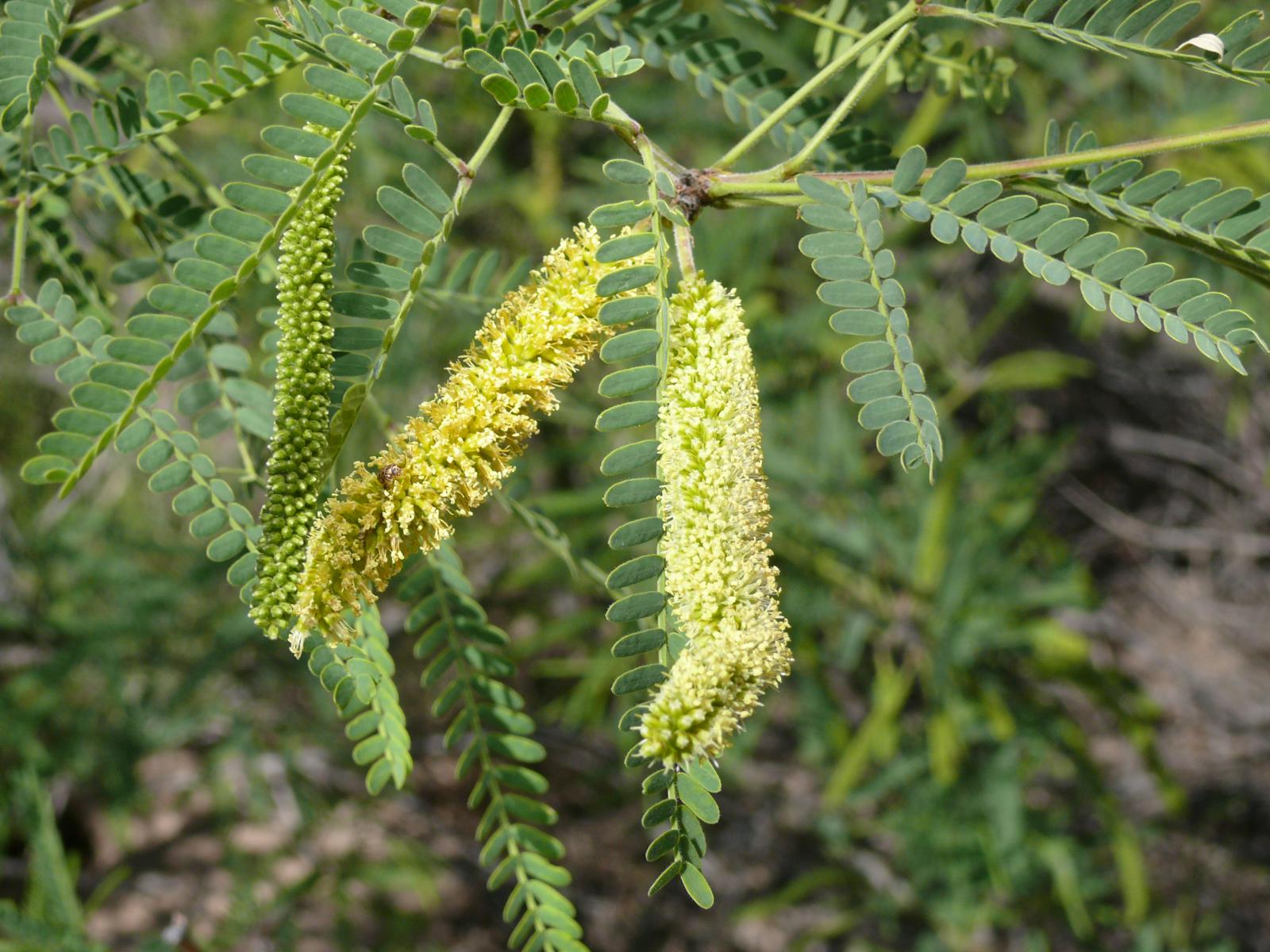
Velvet mesquite trees are characterized by their Mimosa-like leaves, which have a fine featheriness and are bipinnate and grayish-green, reaching up to 6 inches (15 cm) in length. While deciduous trees lose their leaves in the winter, in warm Texas and Arizona winters, the leaves may stay on the tree until spring. The fine hairs on the leaves give them a velvety feel, which is how the tree gets its name.
In late spring, catkins of pale-yellow blooms emerge on the spiky branches of the velvet mesquite tree, forming dense clusters of cylindrical spikes. These fragrant blossoms attract bees and pollinators throughout the summer.
The thorns of the velvet mesquite tree are solid and pointed, with young branches reaching up to 1 inch (2.5 cm) in length. Pruning the spines from immature trees can make a mesquite tree thornless.
The seed pods of the velvet mesquite tree are long and brilliant green in color, growing to be 3 to 9 inches (7.5 to 22 cm) in length.
Screwbean Mesquite Tree (Prosopis pubescens)

The screwbean mesquite tree is a large multi-stemmed shrub or small tree with small yellowish flowers, tiny pinnate leaves, and flaky brown bark that peels easily. Its open, spreading vase-shaped crown grows up to 23 feet (7 meters) tall.
Screwbean mesquite trees are commonly found in Southern Arizona, Texas, and New Mexico, often growing near streams or in damp, marshy soil in deserts.
This particular Prospopis species, also known as the screwpod mesquite or Tornillo, is unique among mesquite trees due to its distinct seed pods. The unusual pods hang in clusters from the tree, resembling fat, pale brown caterpillars. Additionally, screwbean tree leaves and thorns are smaller compared to honey mesquite or velvet mesquite.
To grow screwbean mesquite trees, it’s important to select a location with excellent drainage and plenty of sunlight. Regular pruning of the screwbean trees is necessary to keep them in shape. Pruning immature trees is also useful for removing suckers if you want to grow a single-stem tree.
Identifying screwbean mesquite trees
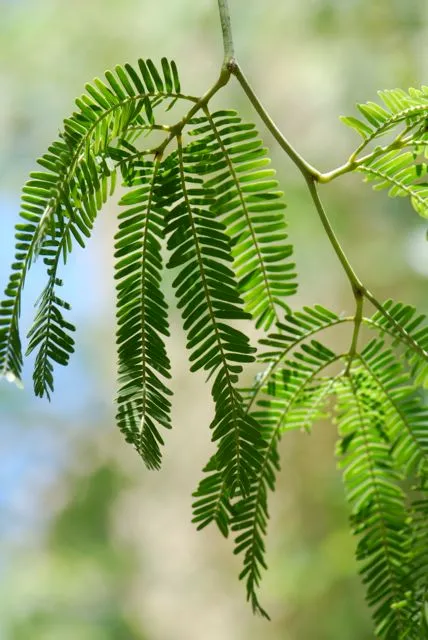
The leaves of the screwbean mesquite tree are pinnately compound and consist of small blue-green leaflets clustered together, with up to nine pairs of leaflets in total. These leaves are the smallest among the different types of mesquite trees and typically measure around 3 inches (7.6 cm) in length.
Screwbean mesquite thorns are straight and do not grow longer than 1.2 inches (3 cm).
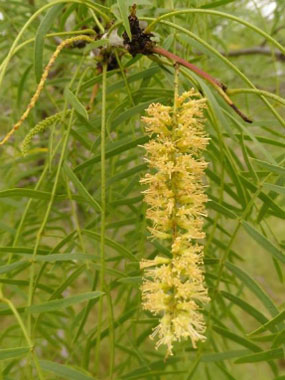
Screwbean mesquite flowers are yellow or white and produce 3″ (7.5 cm) tall conical spikes.

Screwbean mesquite has screwlike seed pods that resemble a rotated screw or spiral tubes. Clusters of coiled mesquite seed pods protrude in all directions from the plant. The unusual screw-like pods are the source of both the English name (screwbean) and the Spanish name (Tornillo).
Chilean Mesquite Tree (Prosopis chilensis)
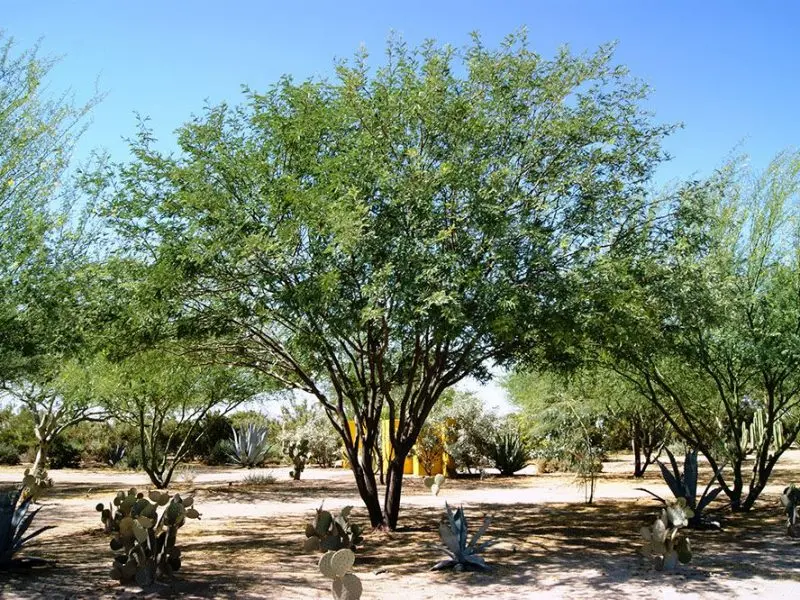
The Chilean mesquite tree is a fast-growing, heat-loving, and drought-tolerant tree with light, feathery leaves, twisting branches, and yellowish-green blossoms. From spring to summer, the blossoms of mesquite are followed by lengthy yellowish-brown seed pods. The Chilean mesquite tree requires minimal care and can grow up to 30 feet (9 meters) in height and 40 feet (12 meters) in width.

Flowers, leaves, and thorns from Chilean mesquite
White Mesquite Tree (Prosopis alba)
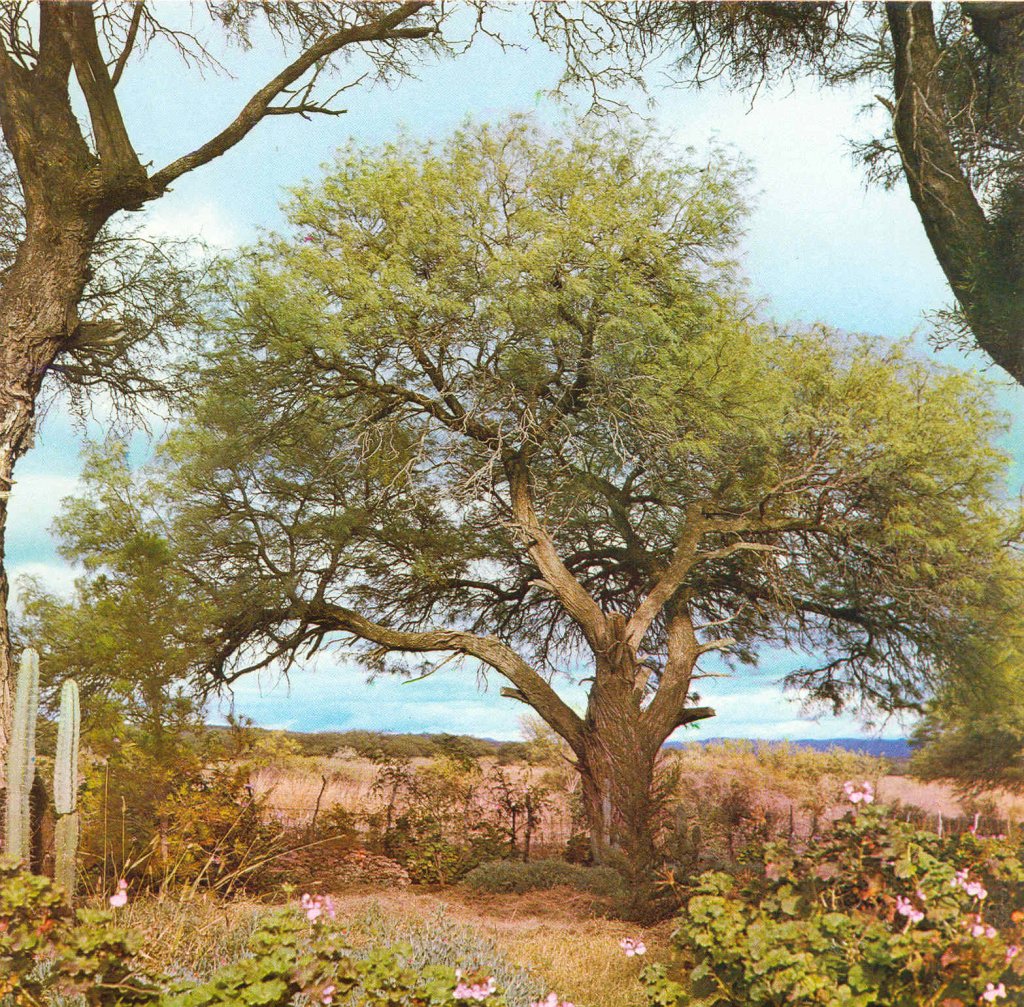
The white mesquite tree, also known as Prosopis alba, is identified by its rounded spreading crown, bipinnate leaves, and immature seed pods. During the spring season, the white mesquite blooms with creamy-yellow flower spikes, just like other mesquite trees. After the blooming period, the tree produces 8-inch long edible seed pods.
Due to the large black seed pods that develop in late summer, the white mesquite tree is sometimes referred to as the white carob tree or “Algarrobo” in Spanish.
Black Mesquite Tree (Prosopis nigra)
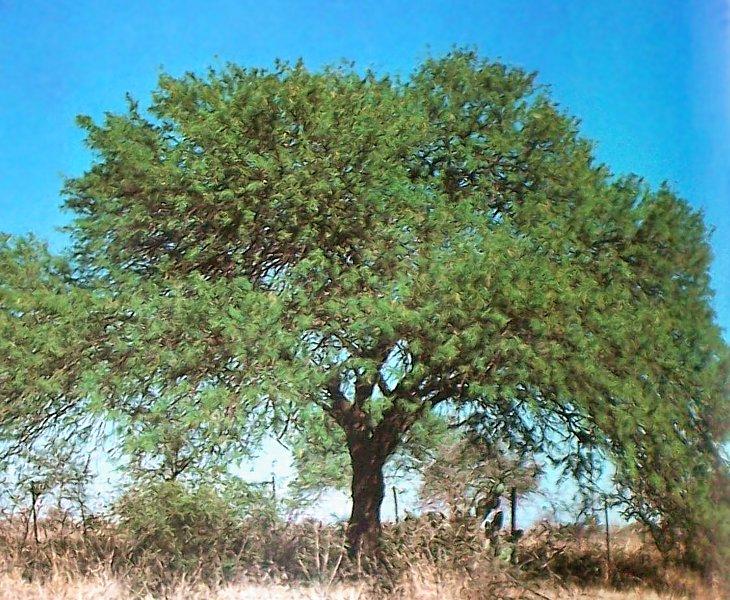
Compared to the black mesquite tree which is native to the Americas, the white mesquite tree is larger and has a wider spreading crown. It is a Prosopis tree that can grow up to 13-32 feet (4-10 meters) tall. The black mesquite tree also has thick foliage, similar to the white mesquite tree, and produces pea-like seed pods. The mesquite flowers of the black mesquite tree bloom in small clusters.
Smooth Mesquite Tree (Prosopis laevigata)

In Texas, Arizona, and South America, the smooth mesquite tree is unusual. Long pinnate mesquite leaves with up to 50 leaflets on one petiole make up the mesquite leaves. Long cylindrical pale-yellow blooms and long brownish-tan dangling seed pods characterize smooth mesquite trees. The thorny shrub-like tree may grow up to 3 feet tall depending on the soil. It has a height of 10 feet (1.5 meters).
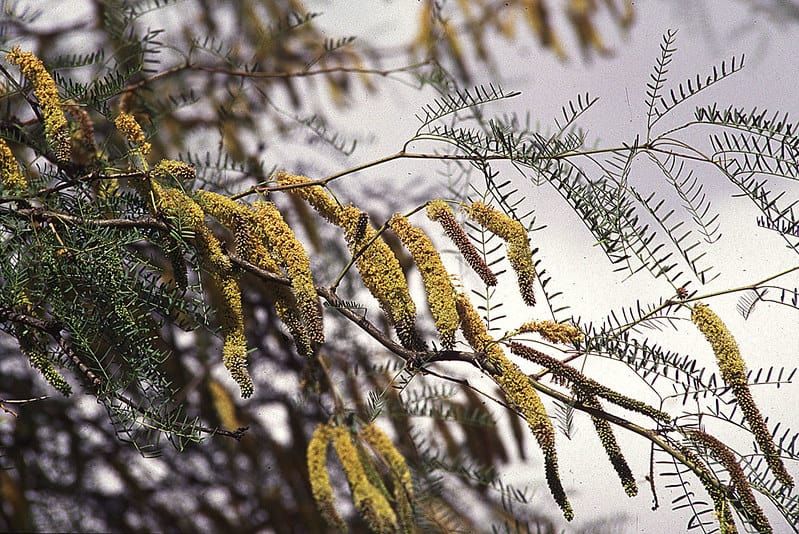
Mesquite flowers and seed pods look silky smooth.
Creeping Screwbean Mesquite Tree (Prosopis strombulifera)
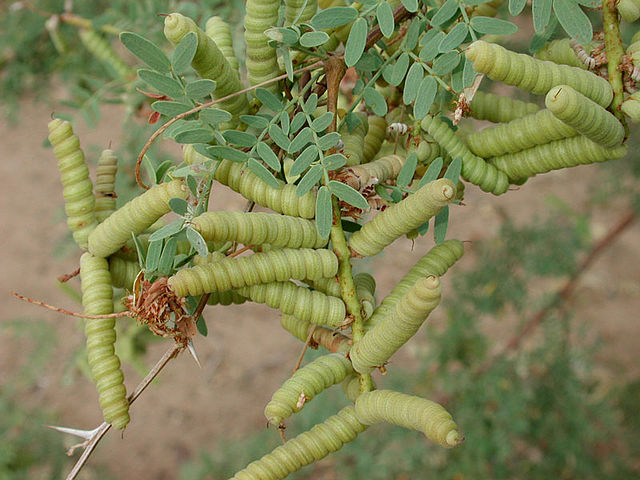
The Argentine screwbean, also known as creeping mesquite, is a thorny shrub-like tree with waxy compound leaves, white spines, and tube-like flowers that produce yellow spherical flower heads.
Its seed pods are coiled, similar to those of the screwbean mesquite. After flowering, the plant produces yellow screw-like pods with brown, bean-like seeds. The Argentine screwbean typically grows to a height of 10 feet (3 meters) and prefers full sun.
